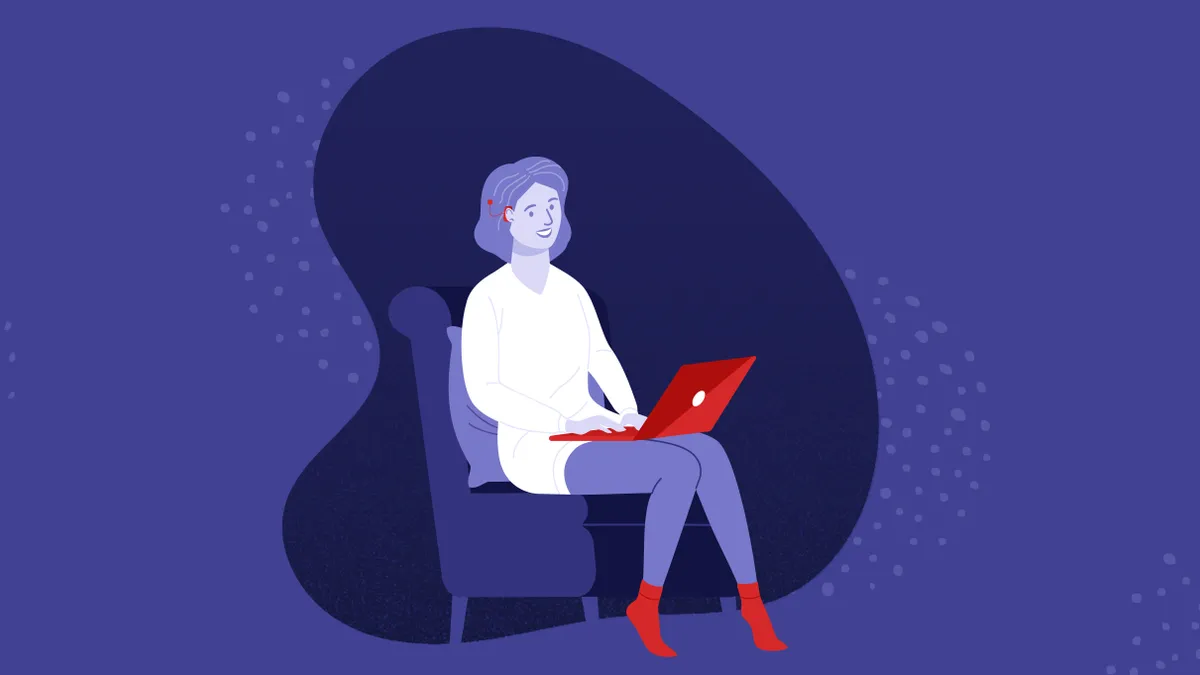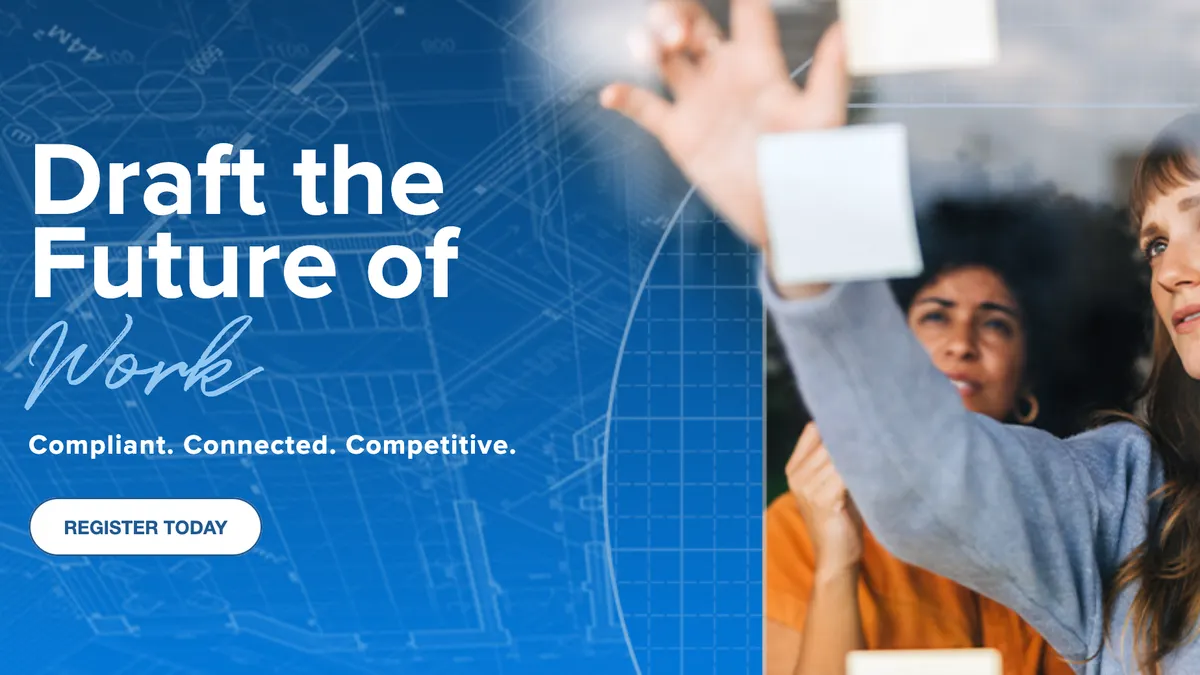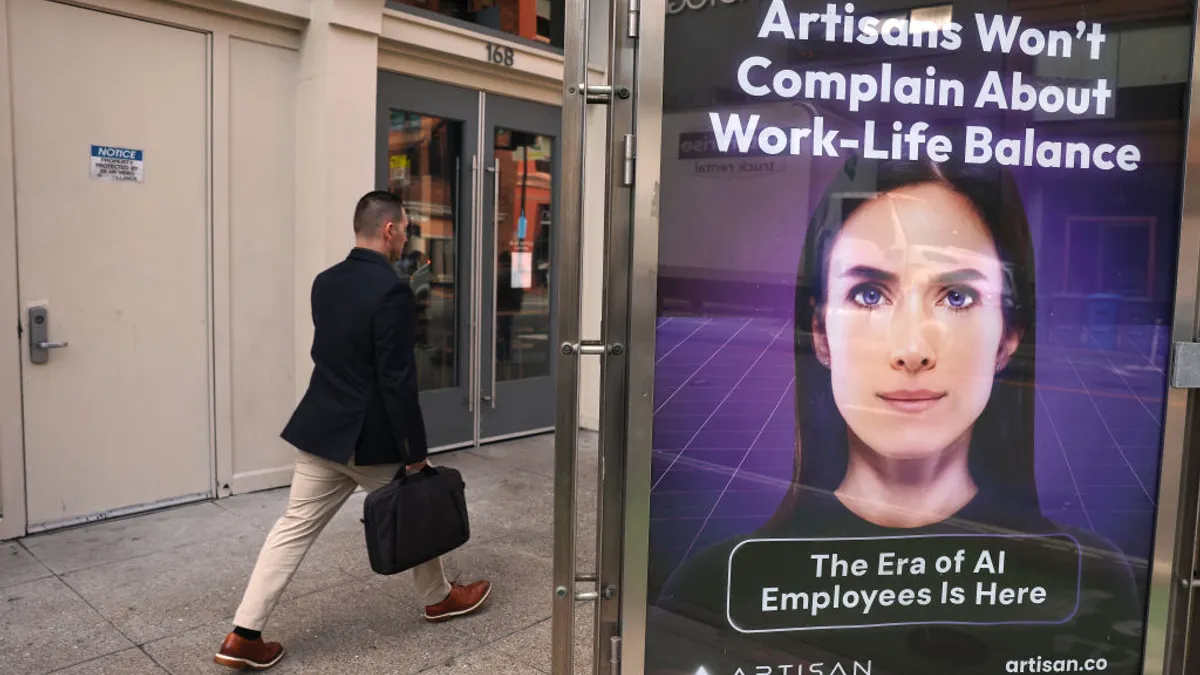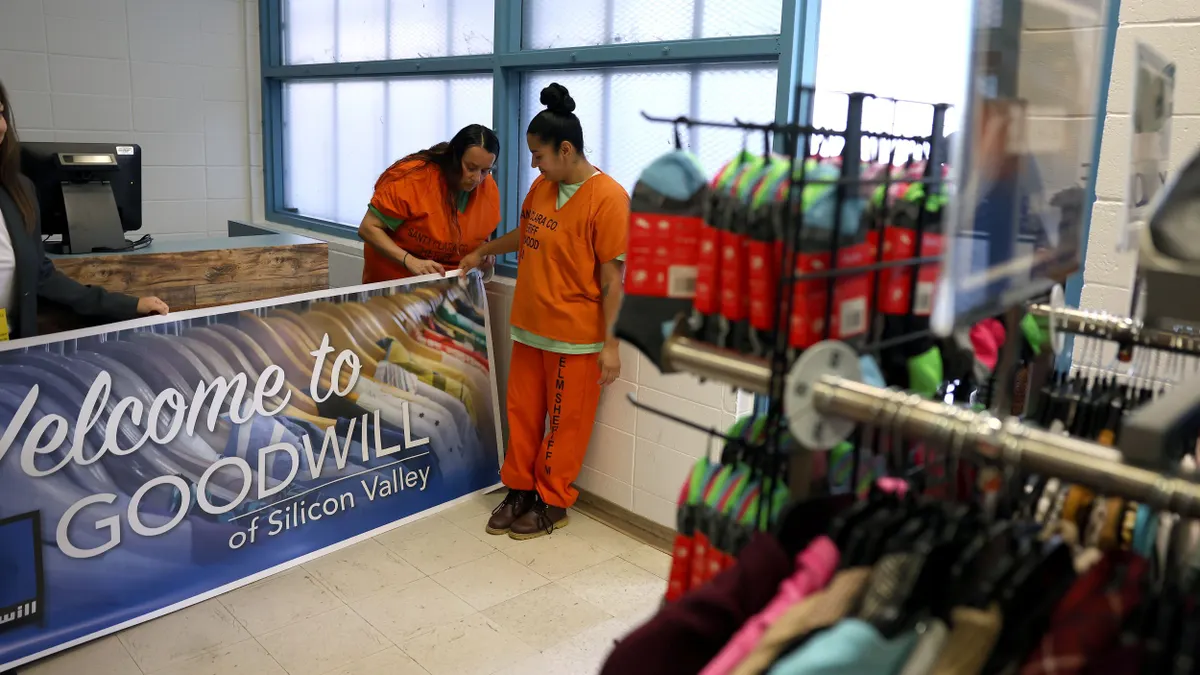Editor's note: As the ADA approaches its 30th anniversary, HR Dive is taking a close look at employment issues affecting workers with disabilities. Stay tuned for related stories on recruiting, accommodations and more.
As businesses scrambled to create remote work infrastructure following pandemic-driven shutdowns, they may have also unintentionally advanced accessibility for workers with disabilities.
Before the pandemic, many individuals with disabilities faced difficulties attending interviews and finding consistent travel options for work. Kirk Adams, CEO of the American Foundation for the Blind, pointed out in an opinion piece for HR Dive that nearly 40% of people with blindness or low vision report having turned down a job offer just because of transportation concerns.
While there are basic guidelines for accessibility of job applications, disability inclusion in the workplace has arguably taken a large step forward because of the conditions brought on by the pandemic. In addition to increased adoption of virtual recruiting, broader acceptance of remote and flexible work arrangements can assuage prospective employees' concerns about accommodations with a potential employer.
"In many ways, the pandemic showed companies that it's possible to increase accessibility and more importantly, shifted the stigma often tied to working from home," Hannah Olson, founder and CEO of Chronically Capable, told HR Dive via email. "Going forward, there is a real opportunity for businesses across the country to take the lead in rolling out digital-first, remote workplace plans that help mitigate the risk of coronavirus, but also are inclusive of all Americans — including those with disabilities and chronic illnesses."
Existing guidelines
Americans with Disabilities Act regulations say that employers' responsibility to provide reasonable accommodations extends to applicants. More recently, this has required updated guidance around the platforms, formatting and even the languages of job applications.
Some use standards such as the Web Content Accessibility Guidelines (WCAG), a set of recommendations enabling people with "blindness and low vision, deafness and hearing loss, learning disabilities, cognitive limitations, limited movement, speech disabilities, photosensitivity and combinations of these" to consume online content. In the recruiting process, this guidance is relevant not only for applications but also for content that informs prospective employees about the company.
Also known as the W3C standards, the guideline "deals with things like alternative text for images. [...] keyboard inputs, as some people can't use a mouse" and "audio transcripts of webpages," Mark Brandau, research principal at Forrester, told HR Dive. "There are standards that exist for that in terms of how to design web applications, including [for] recruiting."
Generally, major providers of recruiting software including applicant tracking systems and candidate assessments are aware of these requirements and have the resources to be compliant, Brandau said. The same is true for most workplace communications apps.
"The everyday technology we use is ultimately effective for many employment situations," Olson said. "Accessible software design, artificial intelligence solutions, captioned broadcasts, video conferencing, and content management systems that support accessibility are now helping companies better integrate people with disabilities and also support job skills training."
A better process, and better culture
Some of the newer recruiting technologies, especially those facilitating later stages of the hiring process, are enabling greater accessibility as they see expanded use. Where technology is helping some companies go the extra mile, however, is in taking steps to removing bias from the process.
"That could mean things like not showing a picture of an applicant, or masking a potential's name, or having an audit using AI looking at the text of a job description to make sure that there's no bias built into it," Brandau said. "I've absolutely seen vendors look to compete on those characteristics and stress some of those things."
Shifting to remote work has equalized a lot of things for recruiters, and perhaps also has shifted views on the requirement of in-person interviews. "I think you have to remind them to be outcome oriented," Brandau said. "They're not really changing the process. You're still seeing the person. You're still seeing how they react… still dealing with questions and off-the-cuff questions. So, just because it changes the format to video instead of in-person, that should be fine right now. The bigger question is, 'What's the right process to get the best candidate?'"
Ultimately, organizations can ensure they are open to applicants of all abilities by being mindful of barriers in the application and interview processes and fostering an inclusive work culture.
"Companies with policies in place that promote flexibility and inclusivity are ultimately more likely to be able to integrate and accommodate candidates with different needs," Olson said. "Some companies have seen success by establishing a disability advisory council, while others work with external organizations that are focused on disability rights to ensure that workplace processes and systems are inclusive of all people. Taking action to address this challenge is what matters."




















